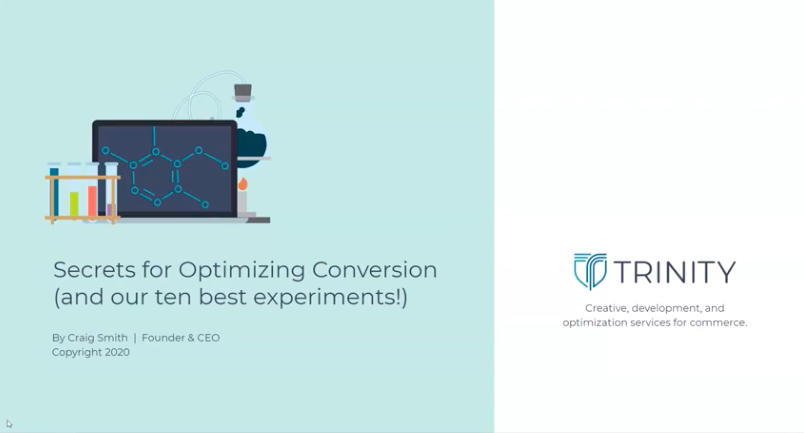Your website is cutting edge today, but it’s outdated tomorrow. Web design can be as fickle as the fashion industry, with trends falling in and out of style before project managers have time to write the requirements to implement them.
If you’re one of the lucky designers who can jump on a trend, or just want to create a cutting edge website this year, check out these nine eCommerce design trends. Some have staying power that will last a few years, while others might be outdated by 2019.
1. Ecommerce Brands are Tracking Microinteractions
One way web designers and marketers can track their success in 2018 is with micro-interactions. More brands are focused on improving the user experience by focusing on these small moments within the customer journey.
A micro-interaction is a small action the customer takes when using your website. Common examples of microinteractions include a swipe on Tinder or a customized “like” on Facebook.
If an eCommerce site can label microinteractions (like watching a video or checking size guide) and work to improve them, they can make dozens of small improvements that lead to greater customer satisfaction and sales.
2. More Designers Are Using Full-Screen Overlays
As more brands take mobile-first approaches to web design, more mobile trends will make their way into desktop designs. One common eCommerce design trend that designers have seen more of is full-screen overlays. Most pop-ups on mobile devices take up the full screen, so it makes sense that they would be full-size on desktop.
These overlays are used to grow email lists, keep customers on site who are about to bounce, and provide incentive offers to increase conversion rates. As long as they continue to work for marketers, the pop-ups aren’t going anywhere.
3. Web Users Will See Increased Animation
Animations have risen like a phoenix out of the ashes from the reject pile of the Internet. Historically, animations were removed for being amateurish in the early 2000s and then again in the early 2010s when developers were creating simple pages for mobile. However, as mobile capabilities and development improve, more designers are turning back to animation to make their pages more dynamic.
Small moving graphics are easy to develop and are able to load quickly without distracting the customer. Consider testing mini-animations on your site to see if your customers respond to them positively.
Here are some examples of web animation done right.
4. A Strong Emphasis on Diversity
In 2018, eCommerce brands need to make concentrated efforts t reflect their customers. Fashion brands in particular are stepping up the diversity levels in their photo studios, on the runway, and on influencer marketing platforms.
Fall of 2017 saw the highest number of models of color in print ads at 30.4 percent, up from 24.5 percent in the Spring of 2017 and 15.5 percent in the Fall of 2015. Both runway fashion critics, print magazines, and customers are demanding better representation, so eCommerce professionals need to respond accordingly. Making an effort to embrace diversity in their photos can help a business enter the modern Internet world.
5. Brutalism is the Hot Design Theme
Multiple blogs, from eConsultancy to Shopify, are highlighting the rise of brutalism as an eCommerce design trend. More luxury brands are doing away with intricate designs, instead opting for thin black lines on stark white backgrounds. The products are the focus and anything else is a distraction.
While all other brands are leaning more toward animation, background video, and tricks to catch your eye, luxury brands are fighting back with simplicity. They don’t need tricks to sell their products, because their customers are going to buy them anyway due to name recognition alone.
6. Designers Are Using Curves, Not Squares
There seems to be a constant battle between curves and squares on the Internet. Currently, curves are en vogue, with big names like Google, Twitter, and Apple all softening their boxes and icons to make them more curvy.
Interestingly, this seems to go against the brutalism theme mentioned earlier. Designers might find themselves opting for curves in their marketing materials in order to soften the message and make it more inviting, at least if they’re not up to the luxury levels that brutalism allows.
7. Machine Learning is Part of the Whole Buying Process
If you can’t find a use for machine learning in your eCommerce design and development, then you’re not thinking hard enough. Designers are using AI for everything from customer service to upsell suggestions. For example, Amazon’s AI recommendation engine drives 35 percent of its sales.
Machine learning doesn’t have to be a complex or expensive tool. Many companies offer machine learning software that can be added through a simply API. By learning about your options and testing tools in 2018, you can find ways to make the customer buying process easier.
8. Interactive Product Pages Are Essential
Product pages will become more dynamic in 2018 as customers click on the products and customize their buying experience. Some brands are investing heavily in digital dressing rooms where shoppers can upload photos to see how garments would fit them. Other companies assign sizes or product needs based on survey questions built into the page. Additional brands are tapping into AR and VR to create in-store experiences from their living rooms.
Product pages are no longer static. Customers want the benefits of in-store shopping while they’re home and it’s up to web designers to create it for them.
9. Customers Want Video Tutorials on Product Pages
Along with product photos and written descriptions on the site, more companies are creating video clips that show the products in motion. These videos complete the trifecta of marketing to customers through text, image, and motion picture.
Brands should consider setting aside part of their content budgets for product videos. They can either complete a test batch of 10 videos and see how they compare against other products, or A/B test pages with and without video. This test also helps eCommerce site managers understand the cost and timeline or video production.
While themes like brutalism and animation might be temporary eCommerce design trends, other tactics like video content and machine learning aren’t going away. Brands that invest in this technology now will see greater eCommerce success by following the trends now instead of later.





